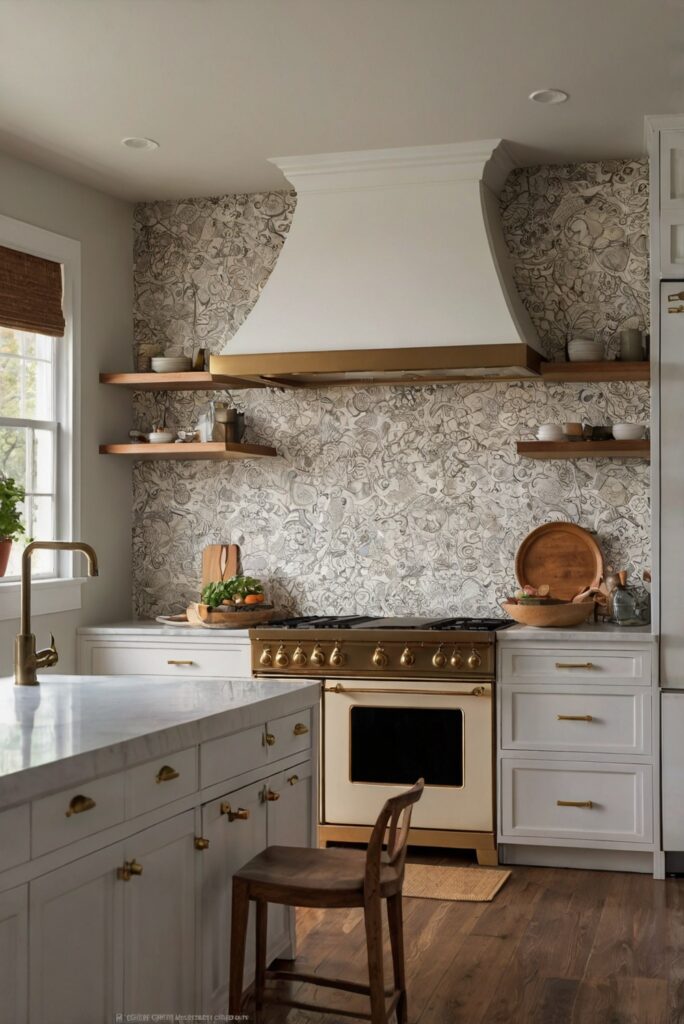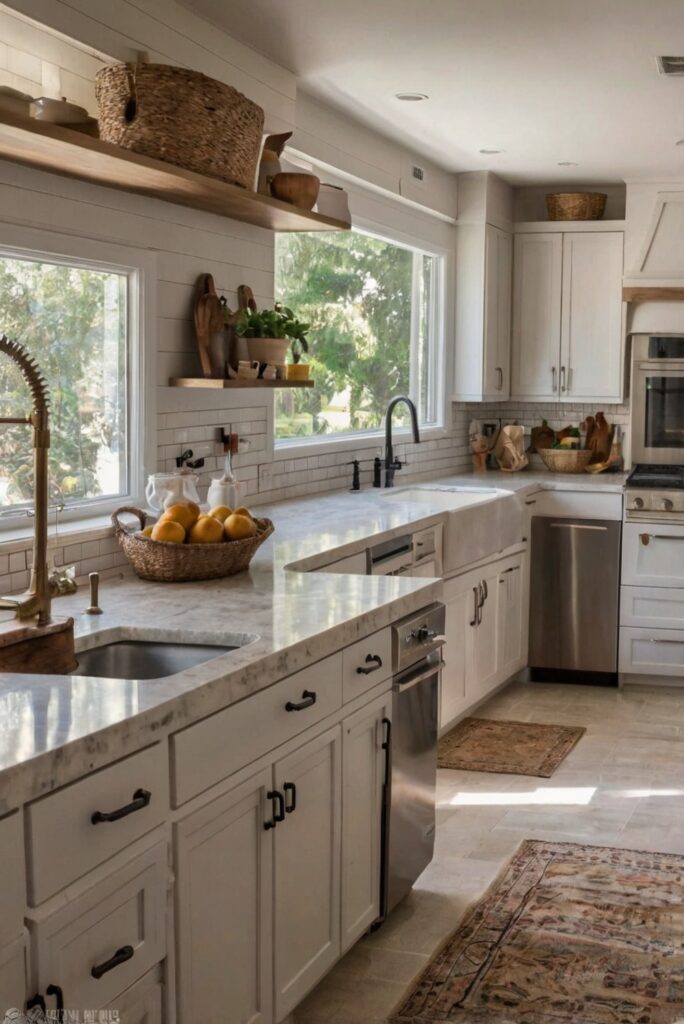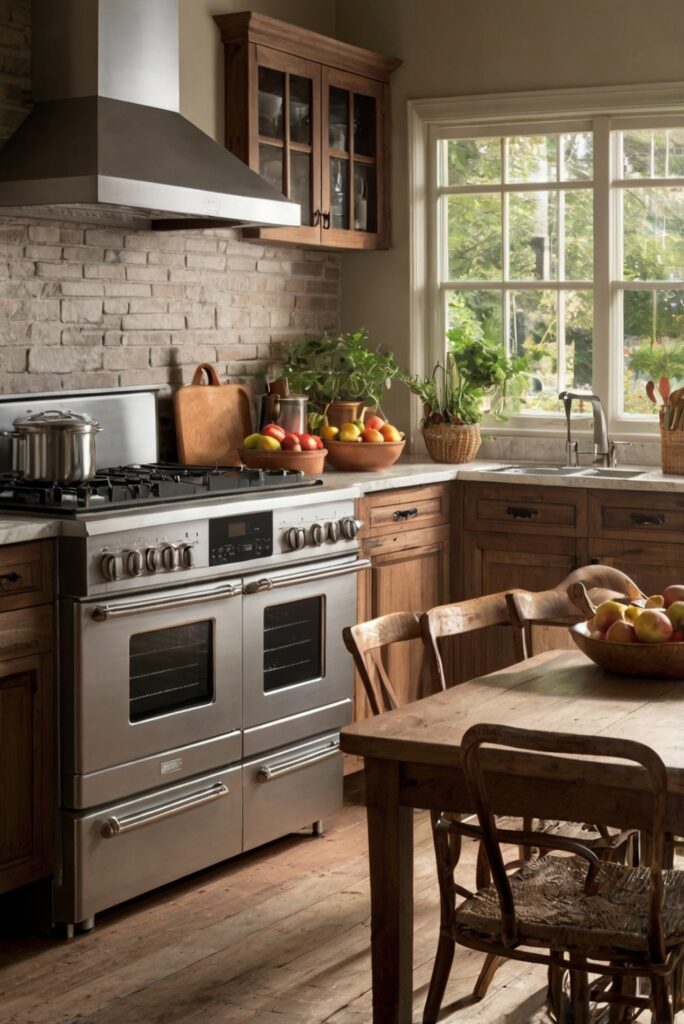Discover the newest trends in kitchen appliance design with this interior designer’s daily routine! Explore sleek, modern styles and innovative features for your home.
What Are the Latest Trends in Kitchen Appliance Design?
The latest trends in kitchen appliance design include smart technology integration, sleek and minimalist designs, energy efficiency, and bold colors. Smart appliances that can be controlled through a smartphone or voice commands are increasingly popular among homeowners looking to streamline their kitchen tasks. Sleek and minimalist designs focus on clean lines and hidden features for a seamless look. Energy-efficient appliances not only save money on utility bills but also contribute to a more sustainable home. Bold colors, such as matte black or vibrant red, are being used to make a statement in the kitchen. When choosing new kitchen appliances, consider your home decor interior design and how the appliances will fit into the overall aesthetic.
What Are the Latest Trends in Kitchen Appliance Design?
The kitchen appliance industry is constantly evolving to meet the changing needs and preferences of consumers. Keeping up with the latest trends in kitchen appliance design can help you create a modern and functional kitchen space. Here are some of the key trends to look out for:
Sleek and Minimalist Designs:
One of the most prominent trends in kitchen appliance design is the move towards sleek and minimalist designs. Consumers are increasingly opting for appliances that have clean lines, smooth surfaces, and a minimalist aesthetic. This trend is driven by the desire for a modern and uncluttered kitchen space.
Smart Technology Integration:
Another important trend in kitchen appliance design is the integration of smart technology. Smart appliances are becoming increasingly popular as they offer convenience, efficiency, and connectivity. From refrigerators with built-in touchscreens to ovens that can be controlled remotely via an app, smart technology is revolutionizing the kitchen appliance industry.
Eco-Friendly Features:
With a growing focus on sustainability and environmental consciousness, eco-friendly features are becoming more common in kitchen appliances. Energy-efficient models, water-saving options, and appliances made from sustainable materials are all part of this trend. Consumers are increasingly looking for appliances that help reduce their carbon footprint and minimize waste.
Customization Options:
In addition to the above trends, customization options are also gaining popularity in kitchen appliance design. Consumers are looking for appliances that can be personalized to suit their specific needs and preferences. This includes the ability to choose different colors, finishes, and configurations to match their kitchen decor and style.
Integration of Voice Control:
Voice control technology is another emerging trend in kitchen appliance design. Appliances that can be controlled using voice commands are becoming more common, offering a hands-free and convenient way to operate them. From adjusting settings on the oven to checking the status of the dishwasher, voice control is making kitchen tasks easier and more efficient.
In conclusion, staying up to date with the latest trends in kitchen appliance design can help you create a stylish, efficient, and functional kitchen space. Whether you prefer sleek and minimalist designs, smart technology integration, eco-friendly features, customization options, or voice control technology, there are plenty of options available to suit your needs and preferences. Consider incorporating these trends into your kitchen design to stay ahead of the curve and enjoy a modern and innovative cooking experience.
1. What are the latest trends in kitchen appliance design?
The latest trends in kitchen appliance design include sleek and minimalist designs, smart technology integration, energy efficiency, and customization options. Manufacturers are focusing on creating appliances that not only look stylish but also offer advanced features to make cooking and food preparation easier. Smart appliances that can be controlled via smartphones or voice commands are gaining popularity among consumers. Energy-efficient appliances with eco-friendly features are also in high demand. Customization options such as interchangeable panels or custom finishes allow homeowners to personalize their kitchen appliances to match their decor style.
2. How can smart technology be integrated into kitchen appliance design?
Smart technology can be integrated into kitchen appliance design in various ways, such as adding Wi-Fi connectivity, touchscreens, and voice control capabilities. Smart appliances can be controlled remotely using a smartphone app, allowing users to monitor and adjust settings from anywhere. Some appliances come with built-in touchscreens that provide recipes, cooking tips, and other helpful information. Voice control features enable users to operate appliances hands-free by simply giving verbal commands. These smart technologies not only enhance the functionality of kitchen appliances but also make cooking more convenient and efficient.
3. What are some energy-efficient features found in modern kitchen appliances?
Modern kitchen appliances come with a variety of energy-efficient features to help reduce electricity consumption and lower utility bills. Some common energy-efficient features found in today’s appliances include ENERGY STAR certification, inverter technology, LED lighting, and eco-friendly materials. ENERGY STAR-certified appliances meet strict energy efficiency guidelines set by the Environmental Protection Agency and consume less energy than standard models. Inverter technology allows appliances to adjust their power output based on the workload, resulting in energy savings. LED lighting is more energy-efficient and longer-lasting than traditional incandescent bulbs. Appliances made from eco-friendly materials, such as recycled plastic or stainless steel, are also considered more sustainable choices.
4. How important is customization in kitchen appliance design?
Customization plays a significant role in kitchen appliance design as it allows homeowners to create a personalized and cohesive look in their kitchen. Customization options such as interchangeable panels, custom finishes, and hardware choices give consumers the flexibility to match their appliances with their decor style. By offering a range of customization options, manufacturers can cater to different design preferences and help homeowners achieve a seamless integration of appliances into their kitchen design. Customized appliances can also add a unique touch to the kitchen and enhance its overall aesthetic appeal.
5. What are some key design elements to consider when choosing kitchen appliances?
When choosing kitchen appliances, it’s essential to consider key design elements such as size, style, color, and finish to ensure they complement the overall look of the kitchen. The size of the appliances should be proportionate to the available space and other kitchen components to create a balanced layout. The style of the appliances, whether modern, traditional, or transitional, should align with the design theme of the kitchen. Color and finish choices should harmonize with the cabinetry, countertops, and backsplash to create a cohesive and visually appealing kitchen. Additionally, considering the functionality, features, and energy efficiency of the appliances is crucial to selecting the right ones for your kitchen.



